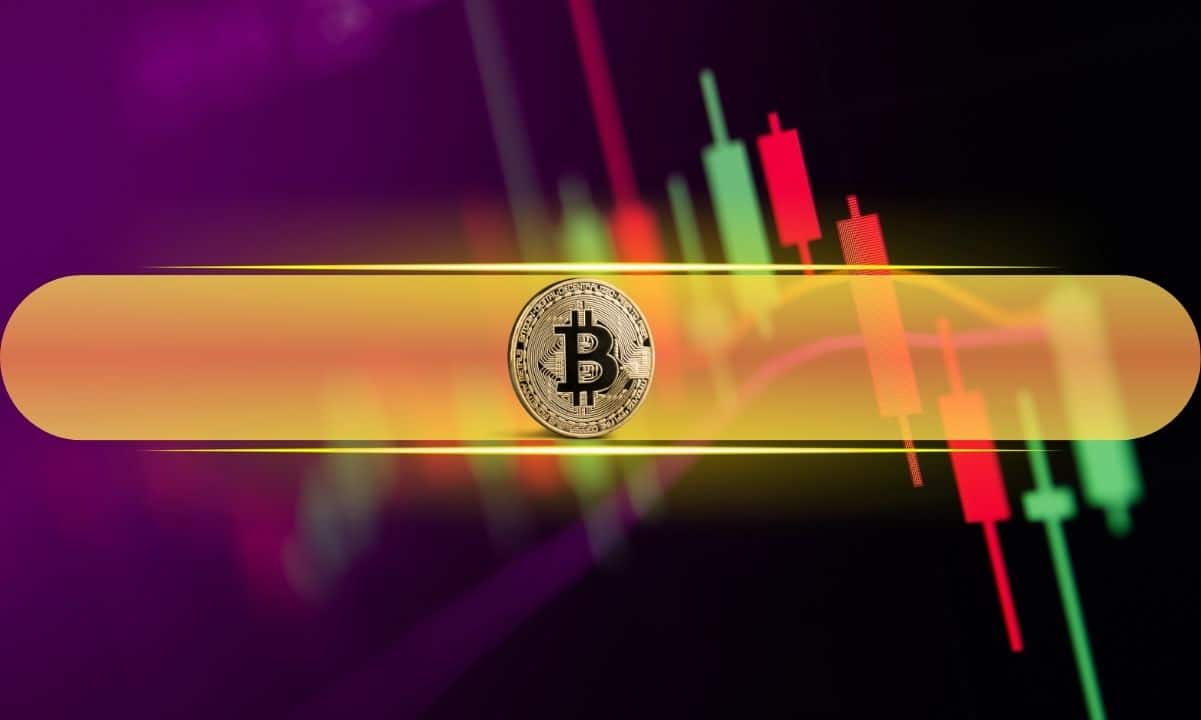ARTICLE AD BOX
- Bybit Vs. Binance: Which is the best?
- Is Binance fees cheaper than Bybit?
- Can US citizens use Bybit or Binance?
Hola Sutrapunks! I hope you guys are sharpening your tools of knowledge to prepare for the next bull cycle, as it can be somewhere around the corner.
Today, we have come up with an exciting Boxing Match! No, No, there won’t be an actual fight. However, we will see the clash of two top crypto exchanges in the market, i.e., Bybit and Binance.
This post will help you decide which exchange is more appropriate for your crypto trading or investment needs.
So, put up your seat belts and enjoy the show!
Round 1 – Foundation
In Round 1, we will analyze the foundation of these exchanges.
Bybit was established in March 2018 in Singapore by Ben Zhou. It initially established itself as one of the top derivatives exchanges. Later the platform expanded its services to Spot trading also.
Binance was established in 2017 on Cayman Island. Its founder Changpen Zhao is one of the most influential names in the crypto industry. Within a short span, Binance became the world’s number 1 exchange in terms of trading volume and number of users. Till today, it holds the number 1 position in many jurisdictions.
Considering the foundation time and team’s experience in the crypto market, Bybit and Binance are at par. Hence Round 1 is a Tie.
So, let’s compare features and different tokens offered by these two platforms.
Round 2 – Features and Crypto Tokens
| Round 2 | Bybit | Binance |
| Spot Market | Yes | Yes |
| Number of Token Pairs | 915 | 1635 |
| 24 Hours Trading Volume ($) | $ 2.4 Billion | $ 10.1 Billion |
| Derivatives Market | ||
| Number of Token Pairs | 112 | 201 |
| 24 Hours Trading Volume ($) | $ 9.3 Billion | $ 30.2 Billion |
| Others | ||
| Number of Users | 10 Million | 28.6 Million |
| Trading Features | Spot Trading Margin Trading (upto 100X) Derivatives Trading | Spot Trading Margin Trading (upto 125X) Derivatives Trading |
| Other Features | Copy Trading Leveraged Tokens Crypto Savings NFT Marketplace P2P Trading Automated Trading Bot Sub-account | Grid Bot Trading Auto Invest Crypto Savings Crypto Staking P2P Trading Binance Visa Card Crypto Loans Binance Pay App NFT Marketplace |
| Availability in the US | No | No Binance.US is an alternative |
| Native Token | BIT | BNB |
| KYC | Required | Required |
1. Bybit offers spot trading features on more than 900 token pairs. Further, the average 24-hour trading volume is around $400 Million.
Binance’s share is much more significant. It offers more than 1600 token pairs. And has an average 24-hour trading volume of approx. $10.1 Billion.
2. Bybit offers derivatives trading on more than 100 token pairs. The average 24-hour trading volume is around $9.3 Billion. Derivatives trading services are the platform’s USP (Unique Selling Proposition), and thus, it can be seen in the phenomenal trading volume.
However, Binance’s share in derivatives trading volume is also much more significant. It offers more than 200 token pairs and has an average 24-hour trading volume of approx. 49.2 Billion.
3. Bybit has a userbase of 10 million. However, Binance has a userbase of approx. 29 million.
4. Bybit provides a margin upto 100 times a user’s trading position. Binance provides a margin upto 125 times.
5. Bybit has a few unique features, such as:
a) Copy Trading – This helps a beginner copy trades of professional traders and make easy money in the crypto market.
b) Leveraged Tokens – Leveraged tokens allow users to leverage a trade without using margin trading features. This saves a user from margin fees, interest, and a need to maintain margin at all times.
c) Crypto Savings – This allows users to earn passive income on their crypto assets. Your assets are liquid while they are deposited in the savings account. This means that you can withdraw or sell them at any time.
d) NFT Marketplace – This allows users to buy and sell NFTs (Non-Fungible Tokens) seamlessly.
6. Binance also has several unique features such as:
a) Grid Bot Trading – Grid Bots allow users to automate their trading strategy and make money while they sleep.
b) Auto Invest – Auto Invest is an automated method of investing in crypto tokens. This helps in building discipline in your investment approach.
c) Crypto Savings – Crypto savings in one of the top ways of making passive income with your crypto assets. Your assets are liquid while they are deposited in the savings account. This means that you can withdraw or sell them at any time.
d) Crypto Staking – Staking is another method of earning passive income on your crypto assets. Moreover, the staking returns are usually much more than the savings returns. However, in staking, there is always a lock-in period. This means that if you withdraw your funds before the lock-in period, you would lose all your staking rewards.
7. Both Bybit and Binance are prohibited for US citizens. However, Binance has a separate exchange called Binance.US. It is a US-specific exchange. However, features provided by Binance.US are limited compared to Binance international platform.
8. Bybit does not have any in-house crypto tokens. However, it has recently created BitDAO, a Decentralised Autonomous Organisation to support crypto projects related to DeFi, DAO, NFT, Gaming, etc. BitDAO has an in-house token called BIT.
Binance has an in-house token called BNB. This token can be used in several ways. You can stake this token to earn passive income, avail of trading fee discounts, etc. Further, Binance consistently purchases BNB tokens from the open market and burns them.
9. Finally, Bybit does not need any KYC upto withdrawal of 20000 USDT per day. Third-party KYC is required for using fiat support on the platform.
However, Binance needs user KYC at the time of sign-up.
Although both candidates are solid with their service offerings, Binance is much bigger and better at this. So, round 2 goes to Binance.
Now, let’s understand the support given by these platforms for fiat currency transactions.
Round 3 – Fiat Support on Bybit Vs. Binance
| Round 3 | Bybit | Binance |
| Fiat Currency Supported | Yes (USD, GBP, EUR, CAD, AED, INR, and many more) | Yes (USD, GBP, EUR, CAD, AED, INR, and many more) |
| Deposit and Withdrawal Methods | Debit / Credit Card (Visa / Mastercard) Bank Transfer P2P Trading Third-Party Payment Channels (Simplex, Moonpay, etc.) | Debit / Credit Card (Visa / Mastercard) Bank Transfer P2P Trading Third-Party Payment Channels (Simplex, Etana, etc.) |
| Crypto tokens that can be purchased with Fiat currency | BTC ETH USDT | BTC ETH BNB USDT BUSD DAI DOGE |
1. Bybit and Binance both support fiat deposits on their platform. This includes several fiat currencies, including USD, GBP, EUR, CAD, AED, and INR.
2. Bybit and Binance both support various deposit and withdrawal channels, such as:
a) Debit / Credit Card
b) Bank Transfer
c) P2P Trading
d) Third-Party Payment channels
Thus, fiat support is similar on both platforms. So, round 3 is a Tie.
The next round is on the fees charged by these platforms.
Round 4 – Fee Structure
| Round 4 | Bybit | Binance |
| Trading Fee Spot Trading Fee (Base) Derivatives Trading Fee | 0.1% | 0.1% |
| Deposit Fee For Crypto For Fiat | No Fee | No Fee |
| Withdrawal Fee For Crypto For Fiat | Variable Fee | Variable Fee |
1. For spot trading, Bybit charges a base trading fee of 0.1%. This fee gets reduced with an increase in a user’s trading volume.
Binance also charges a base trading fee of 0.1%. However, if you pay this fee with BNB tokens, then you get a discount of 25%. This makes your effective cost 0.075%. Thus, Binance is cheaper.
2. For derivatives trading, Bybit charges a base maker fee of 0.01% and a taker fee of 0.06%. Again, this fee reduces with the increase in users’ trading volume.
Binance charges a maker fee of 0.01% and a taker fee of 0.05%.
3. Both the platforms don’t charge any fee for depositing crypto or fiat currencies. However, for fiat deposits, third-party platforms may charge a fee.
4. For withdrawal of fiat currency, both platforms don’t charge any fee. However, third-party platforms may charge a fee.
5. Both platforms charge a variable fee for withdrawal of crypto tokens from the platform, depending on the type of token being withdrawn.
Futures Trading Fees: Binance vs ByBit
| Future trading fee | Binance | Bybit |
| Maker (Max fees) | 0.02% | 0.01% |
| Taker (Max fees) | 0.04% | 0.06% |
| Maker (Minimum fees) | 0% | 0% |
| Taker (Minimum fees) | 0% | 0.03% |
Therefore, because of a lower fee structure, round 4 goes to Binance.
Now, let’s conclude our final pick.
Are P2P trading available on Binance and ByBit?
Yes, P2P trading is available on both Binance and Bybit. However, Binance P2P is more popular and widely used.
Should you be using Binance or Bybit?
Both are good and reliable crypto exchange, but Binance offers more cryptocurrencies pair, and has been around longer. Bybit on the other hand got simpler interface than Binance, and might appeal to many of us. The Leverage trading of Bybit is way simpler than the Binance one. If I would be you, I would have account on both.
Conclusion – Bybit Vs. Binance Crypto Exchange Compared
In our understanding, the winner of this match is Binance. It is a wholesome exchange that provides most of the services available in the industry. If you decide Binance be the exchange for you, then you can watch our Binance Beginner’s Guide for a detailed step-by-step sign-up process.
Although Bybit has lost this match, it provides several features that are unique and helpful. So, a user may use the platform for these unique features.
That’s it for this one. I hope this post helped you in deciding on an appropriate exchange option for you. Let us know your comments and feedback.
Please note that nothing written in this post is a financial advice. Please consult your financial advisor before making any financial decision.
Resources
Help us improve. Was this helpful
Thanks for your feedback!
 (1).png)









 English (US) ·
English (US) ·